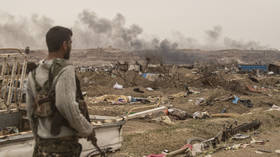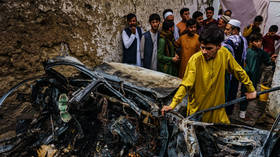NYT investigation reveals ‘hundreds’ of civilian deaths uncounted in US strikes
An investigation by the New York Times has found that the Pentagon severely downplayed the civilian death toll from its “precision” strikes in Syria and Iraq, while failing to investigate reports of potential civilian casualties.
The New York Times investigation, the first part of which was released on Monday, draws on over 1,311 casualty assessment reports that were previously kept under wraps by the Pentagon. Having reviewed the files and visited “nearly 100 casualties sites” in Iraq, Syria, and Afghanistan, the Times reported that the US military often dismissed reports of civilian casualties as non-credible, despite failing to visit the sites or speak to the witnesses.
The Times revealed that in 216 instances in which the Pentagon found reports of civilian casualties credible, its investigators visited the actual site of the bombing in only one case. None of the investigations resulted in any penalties for those responsible for the strikes, and only one “possible violation” in mapping out a strike was identified by the Pentagon.
The Times investigation also revealed that trigger-happy US troops tended to rely on “incorrect or incomplete” intelligence to hit terrorist targets, sometimes killing dozens of civilians instead. Confirmation bias was said to play a role in troops interpreting scant intelligence in a way that affirms their “pre-existing beliefs” about the targets.
For instance, during a strike in Iraq in 2015, US forces killed a child after identifying him as “an unknown heavy object” who was being “dragged” to a supposed Islamic State (IS, formerly ISIS) position by an alleged militant.
Sloppy targeting practices resulted in around 120 Syrian villagers dying in a US strike on July 19, 2016, according to the investigation. At the time of the strike, the Pentagon apparently thought that 85 militants were killed in the bombing instead, even though it took place “far from the front line.” In another botched strike, a warplane killed an entire family escaping West Mosul in 2017, mistaking the civilian vehicle with two children for a car bomb.
Even in instances in which the US acknowledged civilian casualties, it was not in a hurry to pay compensation to the victims, with the Times reporting that “fewer than a dozen condolence payments were made.”
The Times points out that the multiple lapses in the US air campaign cannot be discounted as “outliers,” but rather represent a common trend in “a sharp contrast to the American government’s image of war waged by all-seeing drones and precision bombs.”
“Since 2014, the American air war has been plagued by deeply flawed intelligence, rushed and imprecise targeting and the deaths of thousands of civilians, many of them children.”
While the Pentagon claims that a total of 1,417 civilians died as result of the US bombing campaigns in Syria and Iraq, and 188 civilians were killed since 2018 in Afghanistan, the Times estimates the civilian death toll to be significantly higher.
“Many allegations of civilian casualties had been summarily discounted, with scant evaluation. And the on-the-ground reporting – involving a sampling of cases dismissed, cases deemed ‘credible’ and, in Afghanistan, cases not included in the trove of Pentagon documents – found hundreds of deaths uncounted.”















